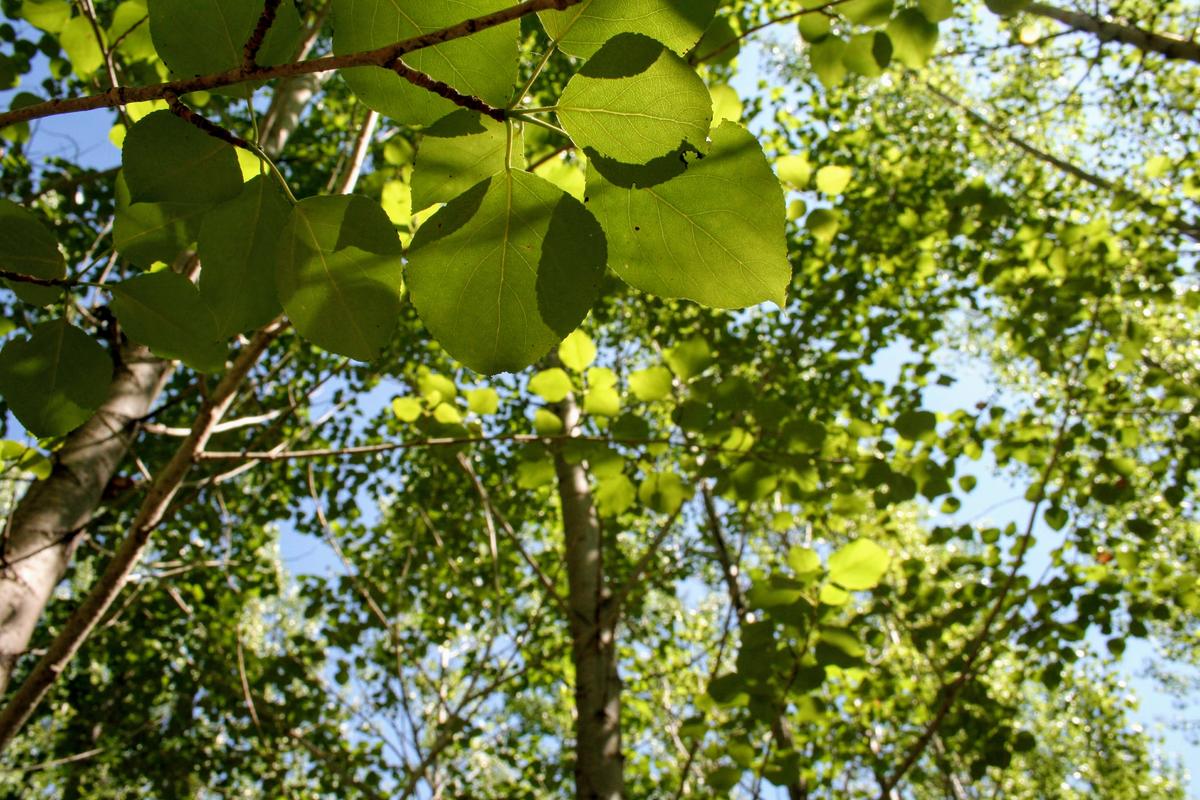It’s lonely out in front for NRRI forest researchers. But when it comes to growing trees, it’s best to be ahead of the curve.
What they’re anticipating is a growing demand for cellulose and other biomass resources for environmentally friendly chemicals, materials, energy and fuels. What they’re doing is preparing Minnesota to be a leader.
“The consumers of the future will demand products that have reduced environmental impact,” said Eric Singsaas, director of NRRI’s Materials and Bioeconomy Research Group. “People are becoming more aware of the impacts of synthetic products that live forever in our waste stream and fuels that contribute to global warming.”
And when the economics line up to commercially produce those bioproducts, NRRI will be ready with a family of fast-growing hybrid poplar trees to meet the biomass need.
NRRI has been working for 20-plus years to develop hybrid poplar tree families that are a cross-breed of locally native cottonwood and European black poplar. These trees can reach maturity in about 10 years, as opposed to a typical aspen which would take about 40 years to grow the same size. They are a non-invasive tree that can be planted and managed as an agricultural crop, requiring intensive weed management during the first three years.
Now the research team is comparing the trees growth in northern Minnesota, central Iowa and southern Indiana with a grant from the U.S. Department of Agriculture. Identically bred trees will be planted in all three climate zones to select trees with parallel growth across the Midwest. The program will demonstrate the economic feasibility from agricultural forestry to consumer products.
“We’re looking for broadly adapted genotypes because that’s more cost efficient,” explained Neil Nelson, program manager. “It can be expensive to have different breeding types for all the different zones.”
Getting out ahead of the anticipated future markets is important because trees – even these super-fast growing trees – take time. Consider the well-funded corn industry that breeds new species of corn in one season. That “season” for the hybrid poplar is about a decade, so patience is key.
The hybrid poplars are interchangeable with aspen and can be used for traditional markets, like pulp and paper. But additional USDA National Institute of Food and Agriculture funding will use forest biorefinery technologies to test hybrid poplar’s potential to produce both biofuel and renewable plastics.
“Our challenge is to develop the materials of the future that achieve the goals of the circular economy, the principles of green chemistry and reduced life cycle carbon emissions,” Singsaas added.
